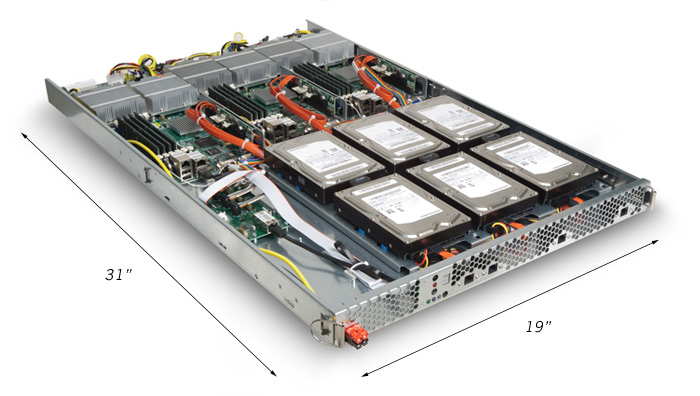Rackable CloudRack operates in 104-degree data centers

Rackable Systems has introduced a new version of its CloudRack enclosure that it says can operate in environments as hot as 104 degrees.
The point, of course, is to save energy costs by raising the temperature in the data center.
The new CloudRack C2 is Rackable’s latest attempt to marry higher density and lower power usage.
The C2 introduces cabinet-level power distribution technology and uses hot-pluggable, N+1 redundant rectifiers to convert AC power to 12V DC power. The server trays also have cabinet-level fans introduced in the original CloudRack.
Most data centers operate in a temperature range between 68 and 74 degrees; some are as cool as 55 degrees, according to Data Center Knowledge.
Rackable calls it "the most energy-efficient and thermally-intelligent cabinet technology" the company has ever offered.
The first CloudRack design introduced last fall featured two to four large fans in the rear of the enclosure. The C2 offers a more dense configuration of 18 smaller fans in the rear of the 23U half-rack (42 fans cool the 46U full rack).
Rackable says that means support for up to 1,280 cores per cabinet using the company's MicroSlice servers (naturally).
So why is this so important? Data Center Knowledge's Rich Miller explains:
Raising the baseline temperature inside the data center - known as a set point - can save money spent on air conditioning. Data center managers can save 4 percent in energy costs for every degree of upward change in the set point.
Google, Intel, HP and Sun have all made announcements with regard to raising set points.
There are dangers to raising the set point, however. Miller, again:
Some data center managers warn that running equipment near the high end of the manufacturers’ suggested range for equipment could void warranties with equipment vendors. Another major concern is what happens in the event of a cooling failure, when a lower set point could buy a few additional minutes of recovery time before the room heat reaches unacceptable levels.
